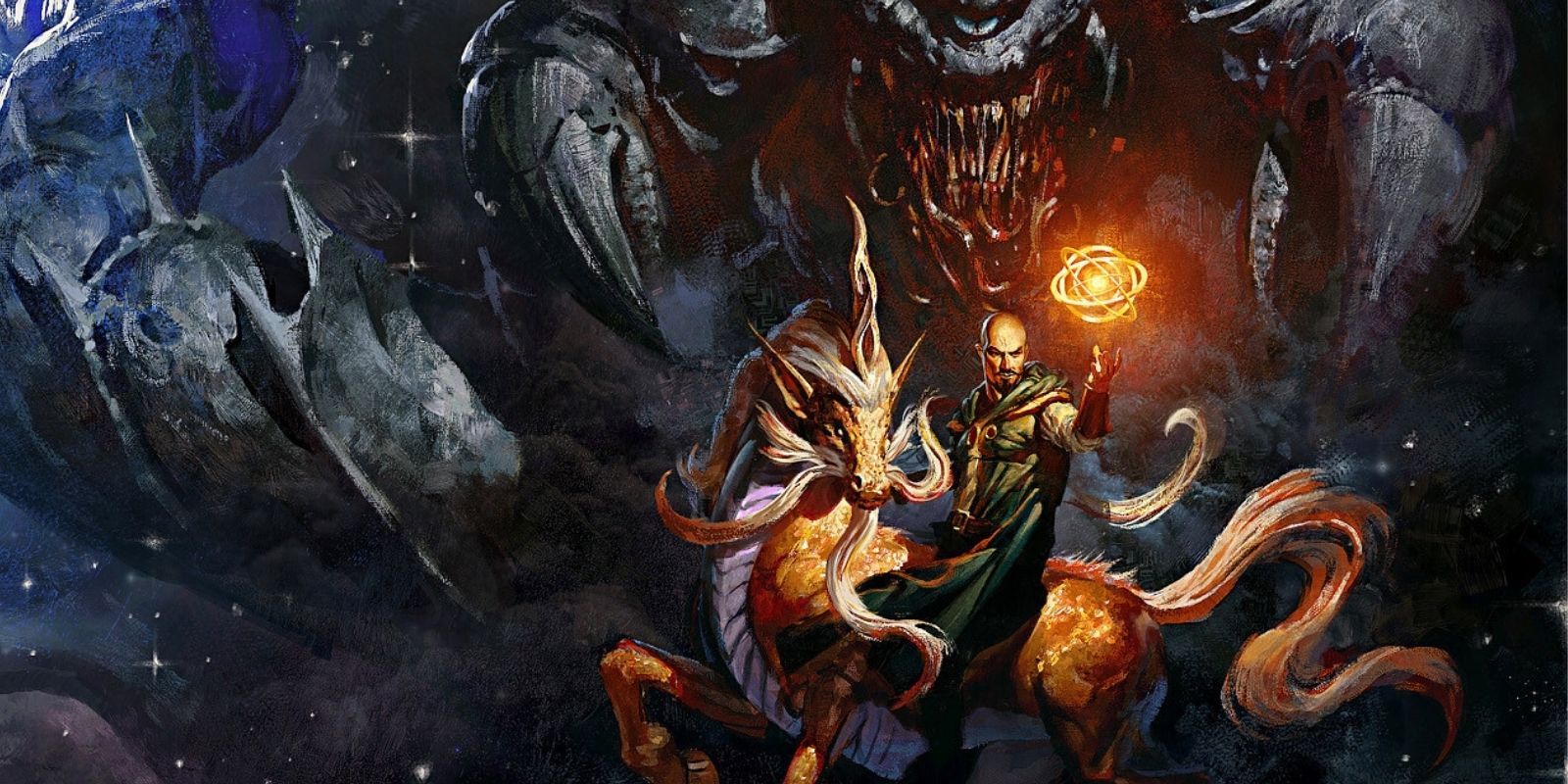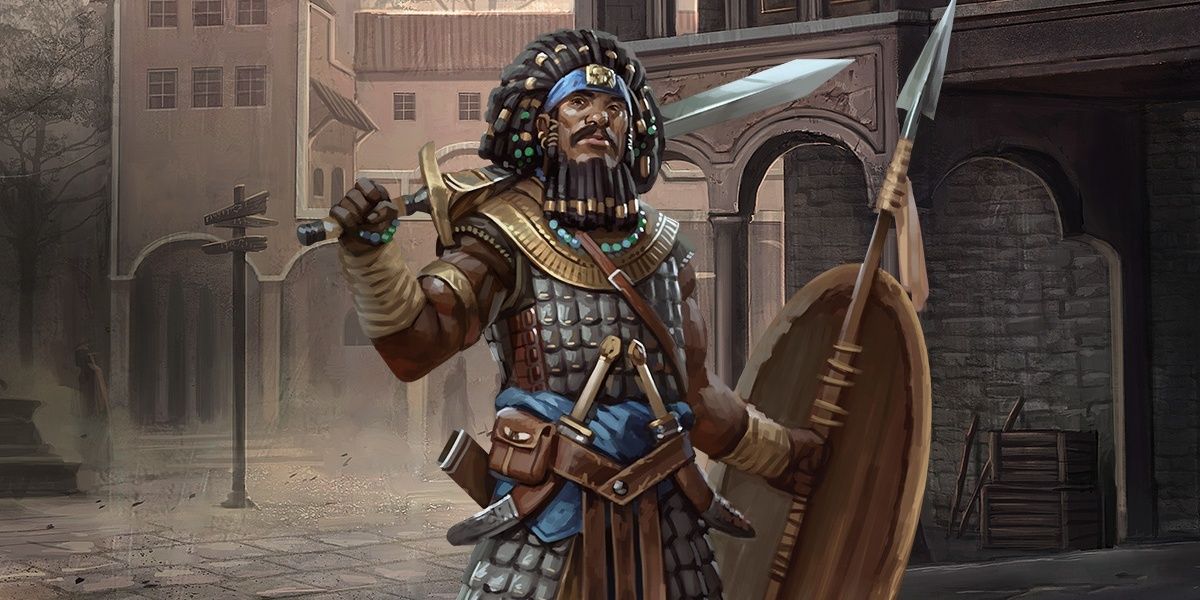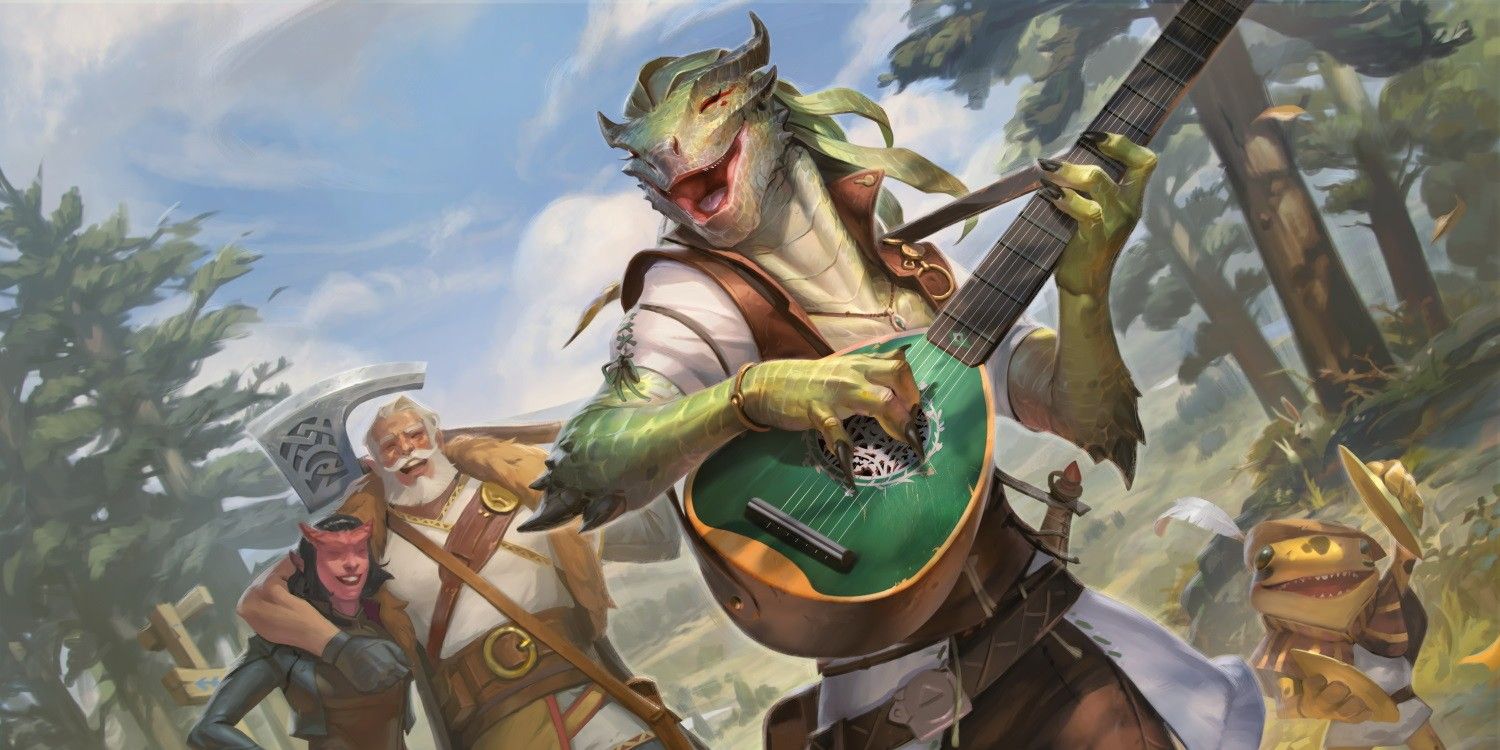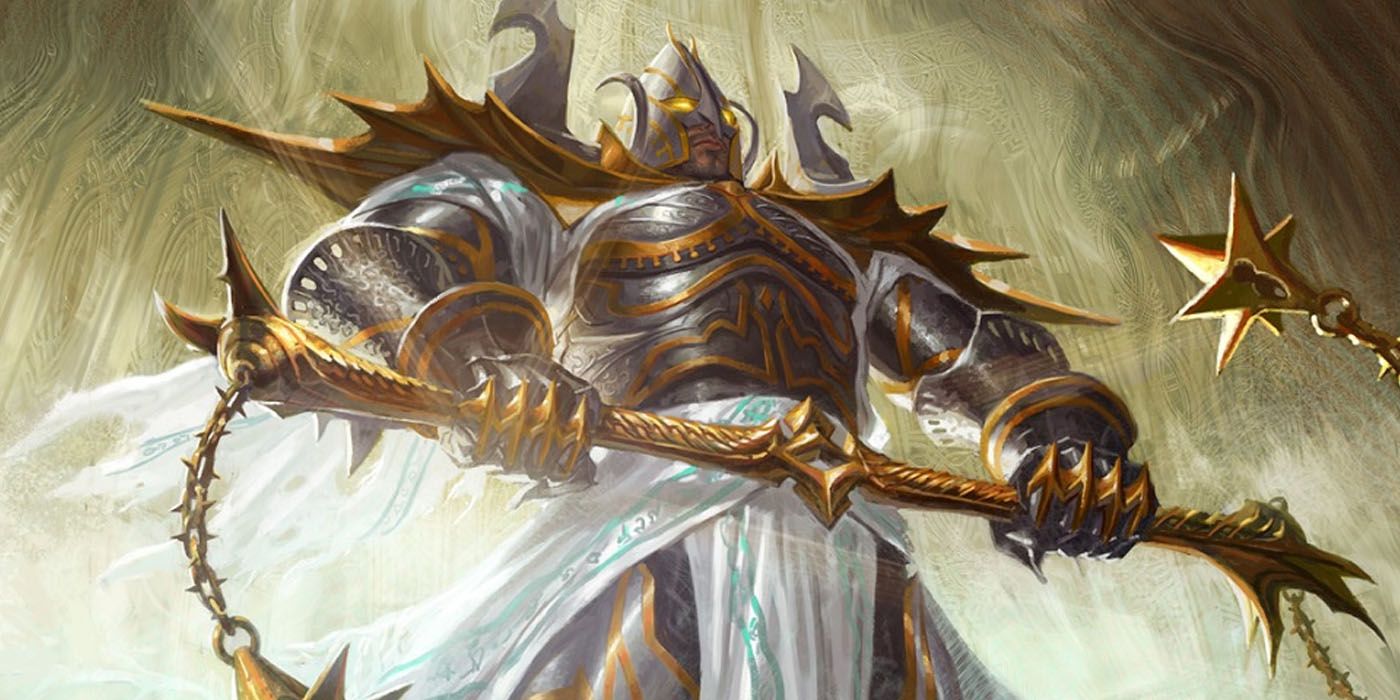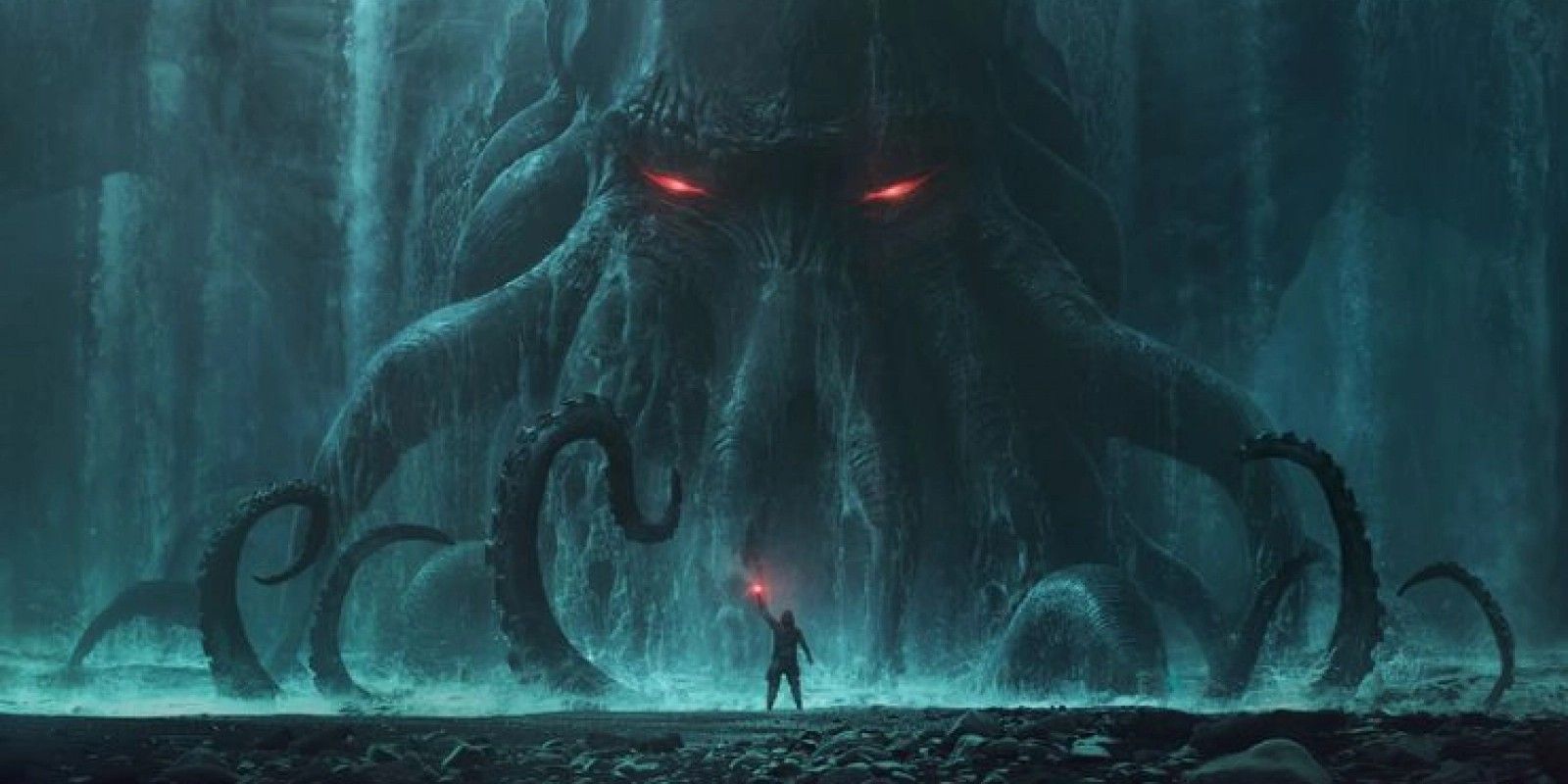Making enemy or ally non-player characters in Dungeons & Dragons is a great way to add depth to any game. Creating and finding stat blocks for them, though, is a little more difficult. Regular creatures have simple stat blocks and abilities that are compact and easy for Dungeon Masters to read and use quickly during encounters. However, DMs will need to take a different approach with NPCs.
One option is to create character sheets the same way players do. This is great for important NPCs with a lot of background to dive into, allowing them to scale to the party and possibly serve as long-term rivals. However, a much easier route is to use the NPC stat blocks each guidebook includes. While earlier books kept things simple with options like Bandits, Commoners, and Veterans,Volo's Guide to Monsters introduced NPCs that essentially use player classes, and Monsters of the Multiverse updated these. Now, these simple stat blocks have a few key class-associated abilities that make running encounters much easier.
The Martial Classes Give NPCs Standard Martial Abilities
MotM has a few martial class NPCs that do great at converting or taking class features and making them easy for DMs to use. The Archer is a great generalized NPC to use in place of any class or subclass that specializes in bows, such as a Fighter with the Archer fighting style. Their abilities are simple, but with its bow (three times per day) the Archer can add a d10 to either the attack or damage roll of a ranged attack. The Champion also models the classic Fighter ability of Second Wind, allowing them to regain 20 hit points as a bonus action once per rest.
The Martial Arts Adept gives DMs a pared-down version of a Monk with its key abilities Unarmored Defense, a higher damage die for Unarmed Strikes, and Deflect Missiles. This creature also is able to push away or knock down opponents once per turn after making an unarmored strike, which isn't an "ability" that Monks receive, but is still thematic to their style of combat.
The Rogue is represented by the Master Thief, which receives signature the Rogue abilities Evasion, Cunning Action, and Uncanny Dodge. The Master Thief, unlike a Rogue, doesn't have the ability to cause sneak attack damage. The Assassin from Volo's Guide does, but this wasn't updated for MotM.
Bards and Archdruids Give NPCs Magical Class Features
As a lower level, CR 2 creature, the Bard doesn't have many abilities. Its key features are spellcasting (which gives it some mostly utility-focused bard spells) and taunt (which imposes disadvantage on opponents). The Archdruid, on the other hand, is a CR 12 creature with many more class-focused abilities. This creature is able to cast a ranged wildfire spell, has access to Druid spells, and can change shape into a powerful Beast or Elemental as a bonus action.
Paladins and Clerics Bring Divine Abilities to Combat
The Blackguards are Paladins who have broken their sacred oaths. These evil NPCs have typical Paladin abilities such as a high Armor Class, a few Paladin spells, and Smite. They also have a Dreadful Aspect ability, mimicking the Oath of Conquest's Channel Divinity: Conquering Presence, which frightens nearby targets. As for the War Priest, while it sounds like it would follow closely to the War Domain subclass, it only has general Cleric abilities. Its Holy Fire ability is somewhat similar to a sacred flame, but it also blinds the target on a failed Wisdom save.
Warlocks and Wizards Have Multiple Subclass NPCs
Warlocks and Wizards in MotM have multiple subclass-based NPCs. The book offers stat blocks for Warlocks with Archfey, Fiend, and Great Old One patrons. Each has abilities, reactions, and spells that match abilities granted to such Warlocks, though, interestingly, none of them have Eldritch Blast.
Wizards in MotM make managing spellcasting much easier, as there is a Wizard NPC for each of the eight schools of magic. Each has an Arcane Burst, an ability tied to their school of magic, and list of spells. One major change this book made that the Wizards highlight was categorizing creature spell lists into "At will" and "n/day each" instead of the spell slots of the old versions. This has made tracking spells for monsters and NPCs much easier for DMs.
Monsters of the Multiverse doesn't include direct NPC versions of classes for Barbarian, Sorcerer, or Artificer. However, a couple of Aberrations have Sorcerer abilities, such as the Derro Savant which uses classic Sorcerer spells. A DM wanting the abilities of these classes for NPC humanoids will either need to seek them out in other monsters or take the long road of creating NPC character sheets.

